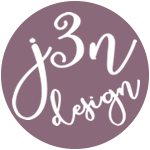Do-It-Yourself (DIY) Personal branding or Business Branding can be an inexpensive way to build your business.
Brand recognition and visual polish goes a long way in inspiring customer confidence and loyalty.
Whether embarking on a Do-it-Yourself brand project or hiring someone to bring your vision to life professionally, these insights into some common pitfalls can provide a point of reference when making decisions.
Building your own brand is HARD. As a designer who has been branding others for going on 20 years I STILL struggle with my own branding. It’s incredibly difficult, like nearly impossible, to step outside of yourself and see things from an objective, disconnected point of view. The visual aspect of a Personal / Business brand is all too often neglected or put together as an afterthought without real, deliberate planning and logic involved. Yet this visual aspect is often the MOST recognizable piece of a brand – not something to take lightly.
 Some essential pieces to keep in mind when developing your logo and brand imagery:
Some essential pieces to keep in mind when developing your logo and brand imagery:
• simplicity
• clarity
• focus
• consistency
• legibility
- When developing a brand ALL the standard design rules apply PLUS additional branding guidelines. Keeping in mind general rules of thumbs are just that – general. There are always exceptions to the rules, just make sure you have a really good, sound, logical reason if breaking them!
- A graphic logo is OPTIONAL. Often a simple word mark will do the job most effectively & inexpensively.
- The majority of successful logos are highly simplified representations, simplifying a brand down to its absolute bare minimum.
- A logo is a highly visual and simplistic mark used to visually represent your brand. Not intended to tell your entire brand story.
- As much as you may want to incorporate your full business name, mission statement or brief company description in your logo, chances are pretty good you shouldn’t. A logo is often used in conjunction with a tag line, mission statement, elevator pitch or other descriptive text but is not intended to contain all of this additional information! While a logo can sometimes hint at its business niche, tons of effective logos contain no reference at all.
- An effective logo often has either just text. Or just imagery.
- Simplicity is best. Simple, clean lines.
- Consider scalability. Will your logo size-down well? Logos with text, should ideally have simple, bold, highly legible text if they have text at all.
- Consider adaptability – can your mark translate easily to greyscale, small and large scale uses?
- When you think of color remember not only is simple better – multiple colors are more costly when applying to real-world applications such as print jobs, embroidery etc.
- Research before you drive yourself batty creating drafts. Plan and/or sketch (yes with a real pencil and paper) before driving yourself batty creating drafts.
- Consider doing the above steps even before contacting a designer if you plan to go that route. Coming to a designer with a few clear ideas in hand can help to expedite the process and keep costs down! At the same time, when utilizing a professional designer, let them collaborate with you and use their knowledge of what works and what doesn’t to give you the best possible result.
- Whatever route you go, simplify, simplify, simplify!

